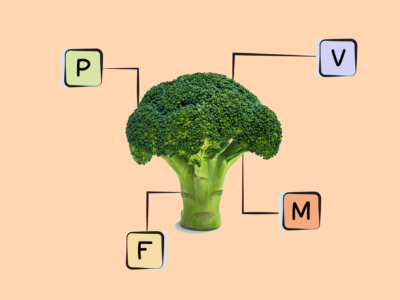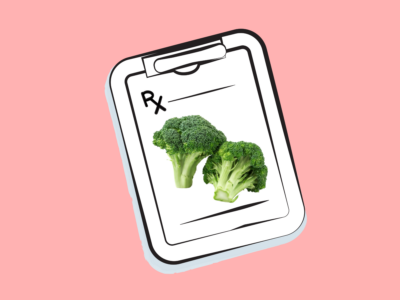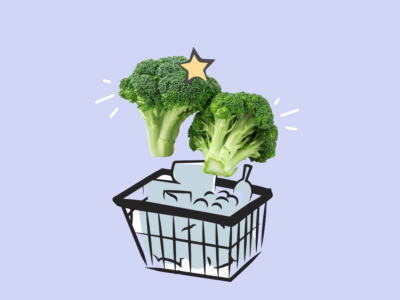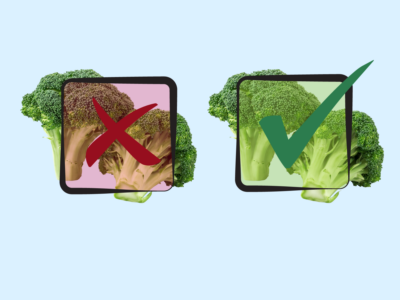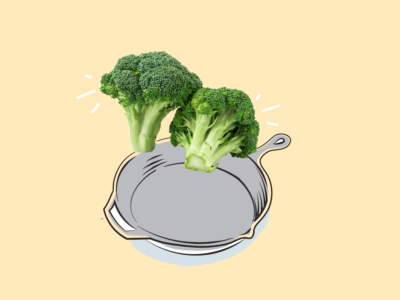Here’s my rule of thumb: If it sounds too good to be true, it probably is. But, like so many health fads, there are scientific studies to support aspects of the hype. So, let’s separate fact from fiction!
While plant foods like broccoli are extremely important for health, it’s misleading to think of them as a good protein source—even legumes, nuts, and seeds, which technically contain way more protein than fruits and vegetables, are not as rich in protein as animal foods.
No, Broccoli Doesn’t Have More Protein than Steak
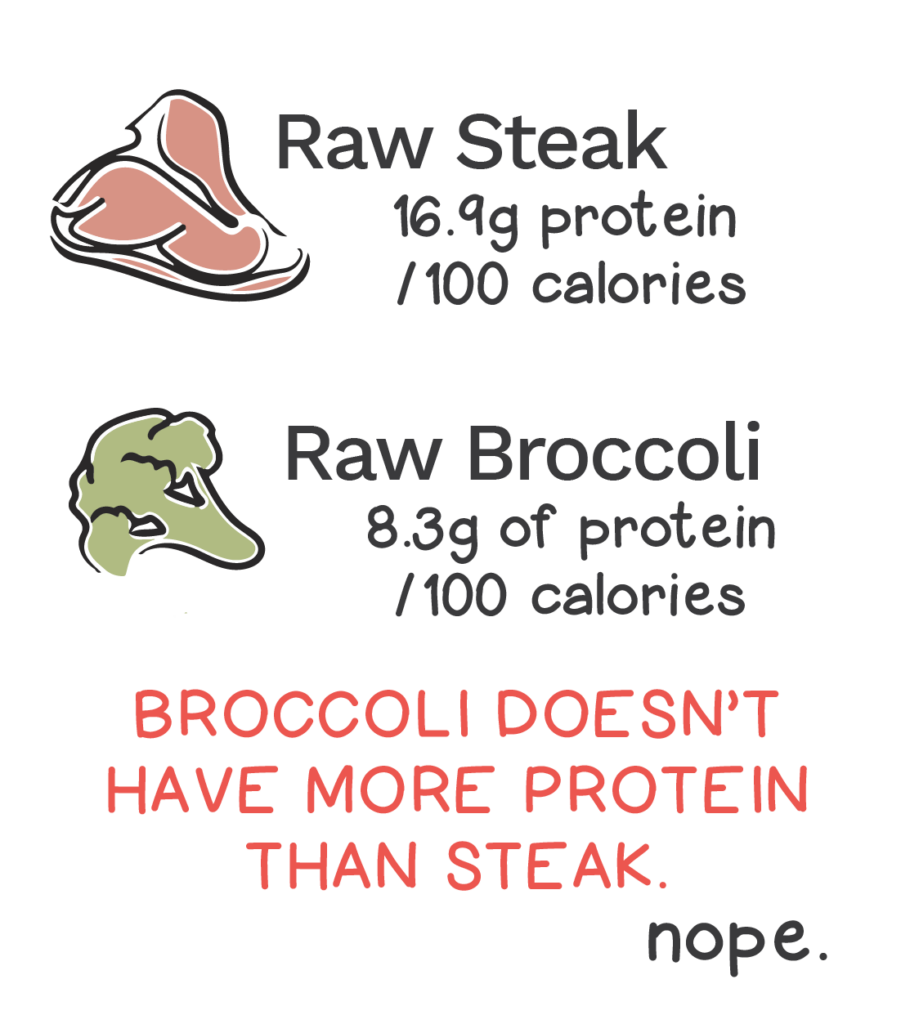
Plants (even fibrous veggies like broccoli and leafy greens) do contain amino acids, the building blocks of protein, and as a percentage of total calories, their protein content can appear fairly high. But, these foods are so voluminous that eating enough of them to actually get that protein is a full-time job (if it’s even physically possible to consume as much as we would need!).
According to the USDA’s FoodData Central database, raw broccoli has only 8.3 grams of protein per 100 calories, equivalent to 294 grams or 3.3 cups of broccoli. And even though broccoli shrinks a little during cooking (making it a more reasonable volume to consume), it also looses some protein. Cooked broccoli only has 6.8 grams of protein per 100 calories, although in this case you’re only consuming 1.8 cups, or 285 grams.
Steak on the other hand has substantially more protein per calories. Lean, raw sirloin steaks contain 16.9 grams of protein per 100 calories, a 2.7-ounce (76-gram) serving, or about the same size as a deck of cards. And in the case of steak, protein is concentrated when cooking. A broiled, lean sirloin steak contains 17.7 grams of protein, in a 2-ounce (55-gram) serving. We’d actually have to eat 4.6 cups of cooked broccoli to match to protein of a 2-ounce portion of broiled sirloin (for 2.6 times more calories).
In addition, plant protein is more difficult to digest than animal protein. While the Digestible Indispensable Amino Acid Score (DIAAS) has not been calculated for broccoli, it has been calculated for a collection of animal and plant foods. The higher the score, the higher the protein quality. Here are some measurements of common foods:
- Whole milk : 1.14
- Whole egg: 1.13
- Beef: 1.10
- Chicken breast: 1.08
- Fish (pangas): 1.06
- Fish (tilapia): 1.00
- Garbanzo beans: 0.66
- Cooked rice: 0.59
- Cooked peas: 0.58
- Lentils: 0.54
- Rolled oats: 0.54
- Tofu: 0.52
- Red kidney beans: 0.51
- Barley: 0.51
- Black beans: 0.49
- Rye: 0.47
- Roasted peanuts: 0.43
- Wheat: 0.43
- Almonds: 0.40
While plant foods like broccoli are extremely important for health, it’s misleading to think of them as a good protein source—even legumes, nuts, and seeds, which technically contain way more protein than fruits and vegetables, are not as rich in protein as animal foods. Animal foods contain all twenty amino acids and are the only sources of some other key nutrients, including vitamin B12, creatine, taurine, and carnosine. Therefore, a nutrivore diet must include fish and shellfish at the very least, if not a wide variety of meats.
Researchers have conducted studies where participants eat up to 500 grams (over a pound!) of broccoli daily and shown health benefits!
But, what about gorillas, who share much of our primate physiology and get huge just eating leaves? In a general sense, the “design” of our digestive tract is similar to our great ape relatives: we all have the same gut anatomy from the stomach straight down to the colon. But, that’s where the similarities end. In humans, the greatest total gut volume (over 56%) is in the small intestine, whereas in other primates like gorillas, the greatest total gut volume (over 45%) is in the colon, where fibrous plant material is broken down by their gut bacteria, producing and liberating nutrients for absorption. Basically, human colons are proportionately much smaller than we see in other primates, who have giant hindguts perfect for microbial degradation of woody seeds, seriously tough plant fiber, and other bulky material. That’s why creatures like gorillas can obtain huge amounts of nutrition from plant foods that humans can’t even digest!
This isn’t to take away from broccoli’s amazing health benefits, but rather to bust the myth that broccoli is a great source of protein. It’s not.



